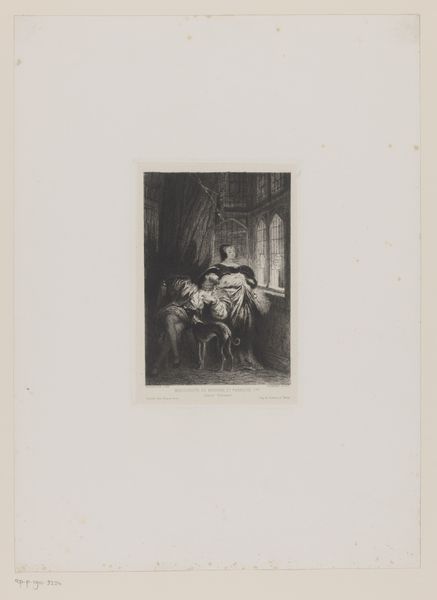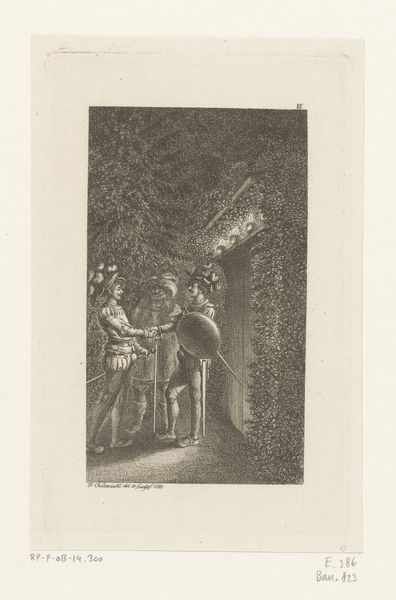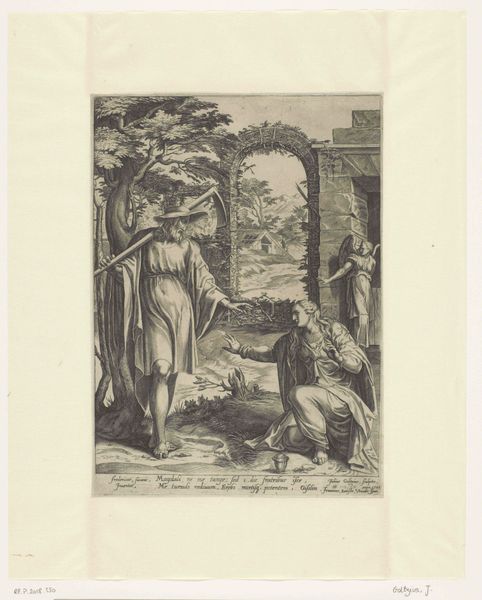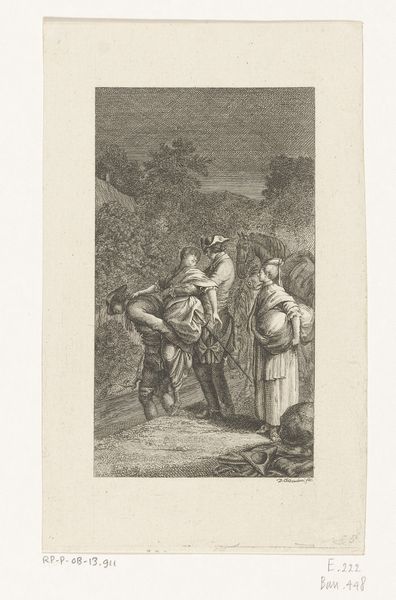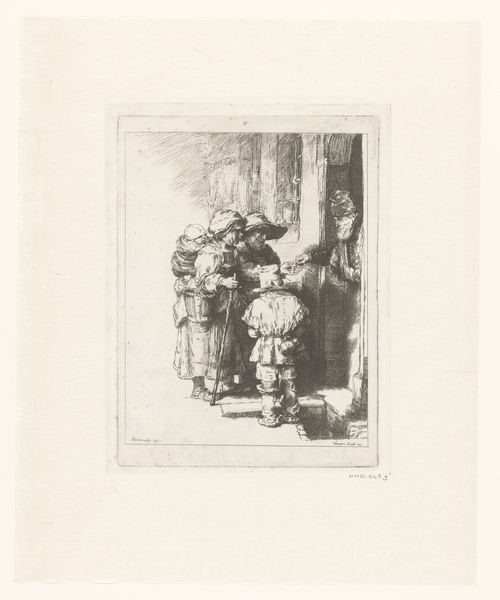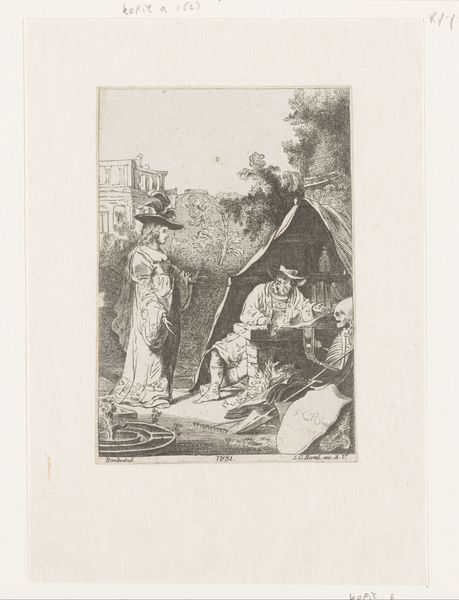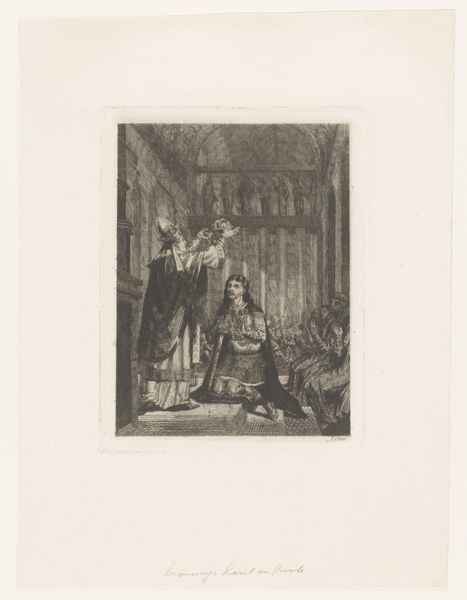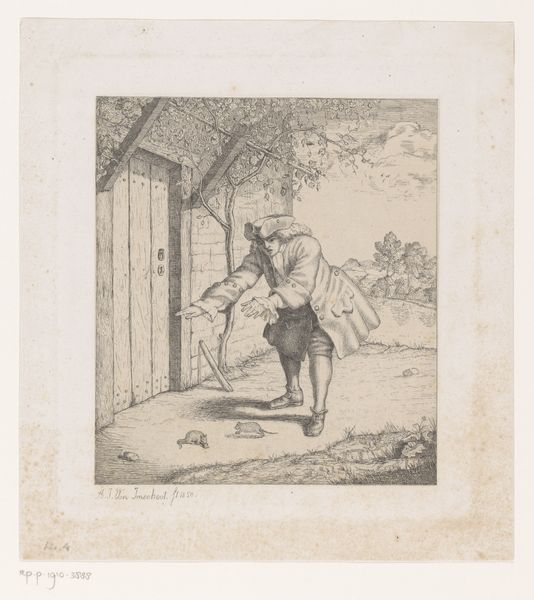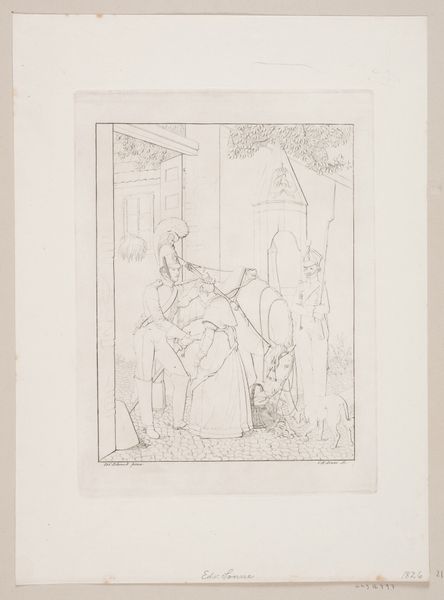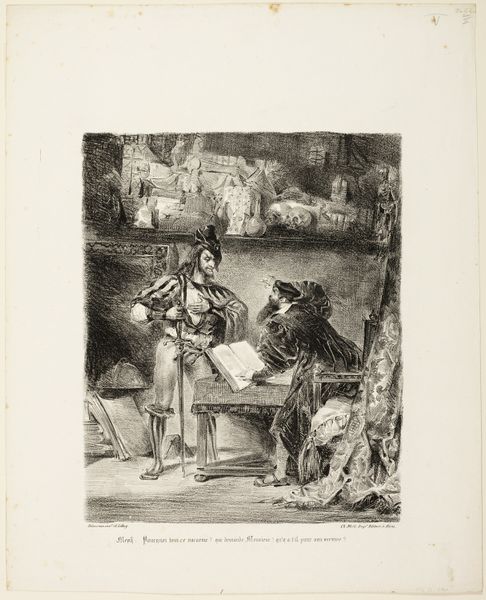
Dimensions: height 244 mm, width 180 mm
Copyright: Rijks Museum: Open Domain
Albert Glibert likely created this etching in the late 19th or early 20th century. The medium of etching carries with it a rich history, distinct from painting or sculpture, and deeply rooted in reproducible printmaking. To make this image, Glibert would have coated a metal plate with a waxy, acid-resistant substance, then drawn his composition through this layer, exposing the metal beneath. After immersing the plate in acid, the drawn lines would be etched into the metal, creating grooves to hold ink. The real labor, of course, lies in the drawing, and the artist’s rendering of architecture and figures – it is carefully observed, and deeply evocative. But we can appreciate how this painstaking process, akin to industrial production, democratized art, making images like this accessible to a wider audience. It is important to consider the material and process, challenging any hierarchy between art and craft.
Comments
No comments
Be the first to comment and join the conversation on the ultimate creative platform.
